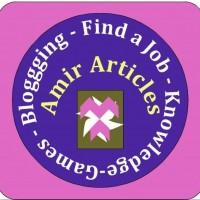
Introduction
When bloggers write blogs on several topics and each topic must contain some interesting notes and information about the theme they are writing on, they then promote their blogs ahead for publishing if they find it unique and better than others.
And while auditing its uniqueness by the publisher before bringing it to the readers, finds it plagiarised, your writing is not too far from getting defamed, and finally, you have to throw it into the trash. The whole effort you invested gone in vain.
Most of the authors counter this fear of getting their writing plagiarised and finally dumped into no use. This may be the problem for some but an alarm for those who attempt to copy other material to improve theirs.
As per some writers, if many people are writing on similar topics in a common language, there will be more than a half percent chance of including the same words and vocabulary in their writings.
For some, every word identifies his distinctive writing style, which means no place for plagiarism.
What Is Data Science? A Complete Guide for Your UnderstandingHere in my blog, I will highlight this issue, its causes, and types, and end with financial aid's vitality.
What is plagiarised content?
According to most people, plagiarism is stealing someone's idea and implementing it in your writings and presenting it as your unique creation. It is more an offensive move. One adopts it illegitimately.
In simple words, others' presentations copied ideas as one's own without giving the source credit. If you are looking at the harshness of the statement, think of the person whose original writings have stolen, and the copier renowned his name in the creation.
You can feel the pain of the person and his feelings when others steal their ideas and do not give credit.
How can one justify that particular content is whether plagiarised?
- Dispensing someone else's creation on your name
- Not giving credit to the original writer
- Lack of knowledge where to put quotation mark in the quotations
- Insensible about the information presenting them mistakenly without much idea about the quotation
- Little changes in the formation and leaving the same structure of the content
- Recklessly copying most of the words from a single source and mark as your work
Types of plagiarism
Since there is still an unclear boundary between plagiarism and research, learning whether a particular content shows plagiarised issues and knowing its type can help prevent it.
One can easily recognize the plagiarised material through these essential steps:
When the source is cited
- If the source cited and still there is a plagiarised issue coming across, it means the writer forgot to include the specific location of the reference taken from. However, he mentions the author's name, which can help veil the other forms of plagiarism.
- Sometimes the author provides misinformation about the source he took as the reference from the originals.
- Some writers are too smart and neglect to put quotation marks from the copied text and attempt to create too perfect a paraphrase to make it unique. However, he fails in claiming his original presentation.
When the source is not cited
- Here the writer is known as the ghost-writer as he copies word for word and marks his name
- He does not alter the content and used to copy a portion of the whole and bring straight in his writings and called as a photocopier
- He disguises others by copying the whole text and make changes in the formation of words and phrases
- Sometimes writers copy the content they wrote in their previous writings and violate the laid down policies concerned to maintain the content original
The breach of academic honesty can broadly categorise in the same as:
Direct plagiarism- the word to word transcription of a section of original writing is copied to own content without giving the writer the original writing. As this is done deliberately, specific disciplinary actions can be taken against the cheater in that course.
Self-plagiarism- it is like a school student is submitting his work, which he has done previously. Self-plagiarism also complies with the pursued rules of original writings.
Mosaic plagiarism- this happens when a writer abstracts some significant points and phrases and adds to his writings. It is paraphrasing, which means the structure stolen is the same, but there is a rearrangement of the words.
Finance support
Writers should have the application software in their computer systems to cross-check their content does not resemble anyone else's. This software may carry high costs and could be out of affording. Loans like provident can be useful in this run.
Inference
Plagiarised content is not accepted at any cost when it comes to the original writer's point and dignity. In my consideration, every person has the right to express his feelings before others, provided that they are not copied or plagiarised.
Please share "Plagiarism Issue Can Defame Your Writing Art - Complete Guide" with Friends and Family.
